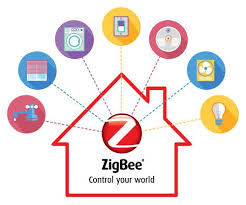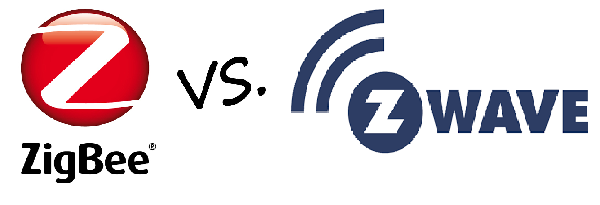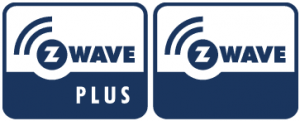Home automation has come a long way since the early days. No longer is there a need to hardwire or pre-wire a custom home at the time of construction. In the Internet of Things (IoT) wireless technologies like ZigBee and Z-Wave have emerged and anyone can install a wide array of home automation products in their existing home. As demand for smarter, more energy efficient homes has grown, home automation device manufacturers have developed products that operate using Wi-Fi and Bluetooth.
ZigBee and Z-Wave are ‘protocols’ which HA devices are built upon to communicate with each other to facilitate signaling and response to those signals. These are languages that devices speak to command and control each other.
While other protocols like Thread, WeMo do exist, most popular home automation hubs today speak one of these two languages.

ZigBee
ZigBee is an open standards technology which has gained attention of major global brands like Philips, Ltron, Comcast, Huawei and Samsung among many others. This standard is used in most popular hubs like Samsung ‘SmartThings’ and Philips Hue Hub. With the convenience of installation and programmability, ZigBee is a sold choice for professionals as well as consumers alike.
Compatibility
The ZigBee Alliance has almost 400 member organizations actively participating in developing the standard. Because of this widespread following and easy availability, expanding and adding to your home automation controller has never been easier. Because of the tremendous popularity, ZigBee has the potential to be the most widely adopted standard out there.
Security
Using an AES-128 encryption ZigBee protocol aims at keeping your home automation deployment secure. But due to the open standard and the easy adoptability that comes with it, not all manufacturers of ZigBee devices can be held responsible for enforcing these security protocols. It is advisable to stick to known manufacturers who are putting in continual and serious effort in development and updating the firmware for the ZigBee devices.
Z-Wave
As opposed to ZigBee, Z-Wave has been a proprietary technology owned by Sigma Designs. In 2016 the interoperability layer of the standard was made open to the public domain. With more than 1500 Z-Wave certified products on the market today according to Sigma Designs, Z-Wave is more than a protocol confined to the commercial market. With increasing demand and popularity, plug-and-play Z-Wave devices are available targeted towards the home automation enthusiast and DIYers. Z-Wave’s next gen standard – Z-Wave Plus – was introduced in 2013 that brought some much needed improvements and addressed compatibility issues.
Compatibility
The Z-Wave Alliance is 375 companies strong and 1,500 products at the time of this publication. You’d find almost 90 percent of security and home automation companies use and install Z-Wave systems world-wide due to a proprietary and more secure protocol. With the announcement of a part of the standard now being made open-standard, the list of compatible products can only grow in the near future.
Security
Also using AES-128 encryption, a Z-Wave network, and the devices within each network, communicate using unique IDs that assigned at the time of network set up. This keeps two separate Z-Wave networks isolated and hubs are uniquely tied to a single Z-Wave network.

The Underlying Technology
All devices in a ZigBee network, form a mesh allowing redundant paths for all devices to reach the Hub. The biggest advantage of this type of wireless network implementation is the ability to grow and reach corners of large spaces. Since a ZigBee device simply replicates and connects to the nearest devices using the same protocol, there isn’t a need for an amplifier or high-energy transmitter.
Similarly, the Z-Wave hub is the central controller which allows up to 232 devices to wirelessly communicate with each other. The more connected devices in your system, the further your signal can reach. Just like to ZigBee’s mesh system, Z-Wave signals “hop” from one device to another so two devices located outside signal range can communicate via devices in between.
The Cost of a Smart Home
With many manufacturers around and intense competition in the space, prices have continued to drop. The real cost-savings are seen in the long run as ZigBee and Z-Wave devices require so little power that the cost of operation is extremely low. Devices can last upwards of 5-6 years on a single set of batteries. Some manufacturers also offer the green power option where there is negligible or no external energy required.
Where to begin?
Almost all ZigBee or Z-Wave products today come in DIY flavors as well as ‘Combo-kits’ that make the dive in to Home Automation a simple task. Very little technical knowledge is required and in some cases, the operation is simply plug-and-play. Samsung SmartThings Hub pairs very easily with other SmartThings appliances like wall switches, smart outlets, door locks and allows simple control from a smartphone or their app. Philips Hue Bridge (hub) also is able to pair with their smart lamps and LED light strips simply by launching the IOS or Android App and pushing a single button on the hub.
ZigBee vs Z-Wave Specification Comparison
Compare their features to determine which wireless technology best fits your home automation needs.
| ZigBee | Z-Wave | |
| Operating range | 35 feet | 100 feet |
| Max no. devices | 65,000 | 232 |
| Data rate | 40-250 kbps | 9.6-100 kbps |
| Frequency | 915 MHz/2.4 GHz | 908/916 MHz (U.S.) |
| Network type | Mesh | Mesh |
| Needs hub? | Yes | Yes |

